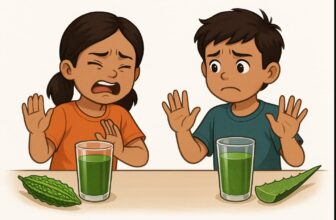When you think of healthy vegetables, green ones like spinach, methi, or broccoli probably come to mind first. But India’s diverse produce offers much more than just leafy greens. From deep purple beets to bright orange pumpkins, India’s markets are full of colorful, non-green vegetables that offer just as much, if not more, nutrition.
Bright-colored vegetables bring their own unique set of nutrients that your body needs just as much. These vibrant veggies don’t just add variety to your plate, they bring essential nutrients like antioxidants, fiber, and vitamins that many green vegetables lack. Whether you’re planning your next sabzi or just looking to diversify your meals, these non-green vegetables deserve your attention.
Here’s your guide to 13 colorful vegetables that deserve a regular spot on your plate, even though they aren’t green.
Why Going Beyond Greens Is Smart for Your Health
Bright Colors Signal Unique Benefits
Each vegetable’s color often hints at specific nutrients. For example, orange usually means beta-carotene (great for eyes), red means lycopene (heart and skin), and purple suggests anthocyanins (anti-inflammatory and antioxidant-rich). These nutrients don’t show up in leafy greens in the same way.
You’ll Build a More Balanced Diet
Relying only on green veggies limits the variety of antioxidants, vitamins, and minerals you get. Adding color not only makes meals visually appealing but also covers more of your nutritional needs.
These 13 Non-Green Veggies Are Just As Healthy (Sometimes Even More)
1. Carrot (Orange)
Carrots are rich in beta-carotene, a powerful antioxidant that your body converts to vitamin A. This supports your vision, skin health, and immune system.
- Common uses: salads, stir-fry, carrot halwa, or carrot juice.
- Lightly cook carrots to absorb more beta-carotene.
2. Beetroot (Dark Purple)
Beets are loaded with folate, iron, and dietary nitrates that support blood flow and reduce blood pressure. They also help in detox and stamina.
- How to use: beetroot poriyal, salad, juice, or even in parathas.
- Pair with lemon juice for better iron absorption.
3. Red Bell Pepper (Capsicum)
Red bell peppers contain twice the vitamin C of oranges and are full of antioxidants like beta-carotene and lutein.
- Meals: capsicum sabzi, mixed vegetable curry, or Indo-Chinese stir-fries.
- They’re sweet, not spicy, great for kids.
4. Yellow Pumpkin (Sitaphal/Kaddu)
This vegetable is high in vitamin A and fiber, supporting digestion and vision. It’s also low in calories, making it ideal for weight-conscious diets.
- Popular uses: dry sabzi in North India, sambhar in South India, or in khichdi.
5. Tomato (Technically a Fruit, Used as a Veggie)
Tomatoes offer lycopene, which supports heart and skin health. Cooking tomatoes actually increases their lycopene content.
- Found in: nearly every Indian curry, chutneys, rasam, or raw in salads.
6. Onion (Red or White)
Rich in quercetin, onions help fight inflammation and support heart health. They also have prebiotics for gut health.
- Daily use: curry base, salad, pakoras, or biryani topping.
7. Sweet Potato (Shakarkand)
Packed with complex carbs, vitamin A, and fiber, sweet potatoes help regulate blood sugar and promote gut health.
- Uses: roasted with chaat masala, vrat recipes, or mashed in tikkis.
8. Brinjal (Baingan)
Eggplants are full of anthocyanins, fiber, and potassium, which support heart and brain health.
- Meals: baingan bharta, stuffed brinjal, vangi bath (Karnataka), or sambhar.
9. Red Cabbage
Contains vitamin K, vitamin C, and powerful antioxidants. It supports immunity and bone health.
- Eat it raw in salads or lightly sauté it with spices.
10. White Pumpkin (Ash Gourd/Petha)
Used in Ayurveda for its cooling and detoxifying properties. It’s low in calories and supports digestion.
- Found in: South Indian dishes like kootu, curry, and even in petha sweets (boiled and candied).
11. Turnip (Shalgam)
Turnips are underrated but carry vitamin C, calcium, and fiber. They support bone and immune health.
- Cook it in North Indian shalgam curry or add to mixed veg dishes.
12. Radish (Mooli)
Radish helps with liver detox, digestion, and reducing acidity. It also contains vitamin C and potassium.
- Mooli paratha, sambhar, dry sabzi, or raw with salt.
13. Red Amaranth (Lal Saag)
Although technically a leafy vegetable, its reddish tint makes it unique. It’s loaded with iron, calcium, and vitamin C.
- Regional favorite: stir-fried with garlic in Odisha, Bengal, and Tamil Nadu.
How to Add More Color to Your Daily Meals
- Alternate sabzis: If today is palak, make baingan or pumpkin tomorrow.
- Raw additions: Add beetroot or red cabbage to salad or raita.
- Cooked blends: Use a mix of colors in stir-fries and curries for better nutrient variety.
- Juice rotation: Try rotating beet-carrot juice with cucumber or amla for diversity.
Mix Your Veggies, Maximize Your Health
Healthy eating in India doesn’t have to begin and end with greens. Carrots, beets, pumpkins, bell peppers, and even radish or brinjal offer a wide range of nutrients that support your eyes, heart, digestion, and immunity. By including a mix of these non-green vegetables in your meals, you bring both variety and balance to your diet.
Next time you’re at the market, don’t just reach for spinach or methi, look around at the reds, yellows, purples, and whites.





